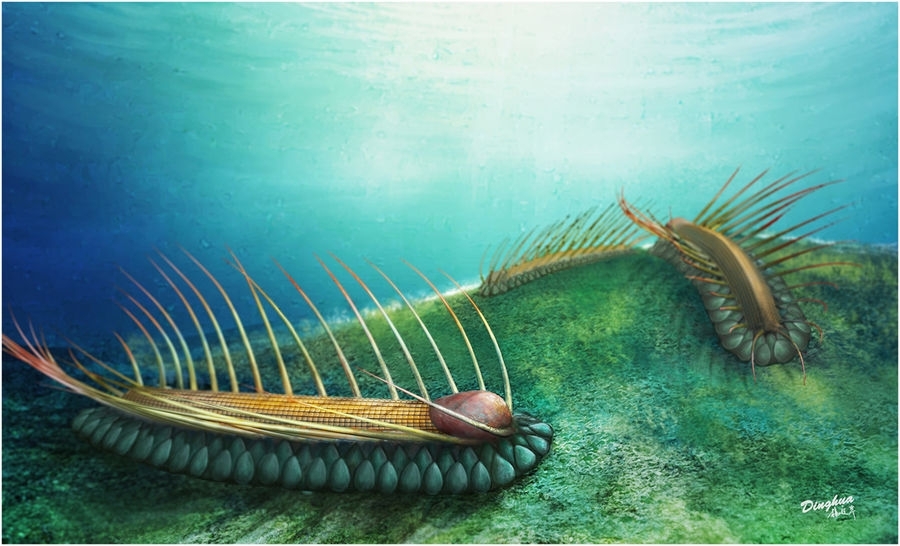500 million-year-old tiny sea creature with helmet-like shell and armoured spikes just discovered
The sea creature was only about 0.7 inch long and 0.1 inch wide.



Researchers have reportedly discovered an incredibly tiny, ancient sea creature that swam the Earth's oceans over 500 million years ago. Two fossil specimens of the tiny worm-like creature, found in China, reveal that the sea creature has a helmet-like shell protecting its head and armoured "cocktail stick-like" spikes sticking out from its sides.
Researchers believe that the new discovery could change the current understanding of Cambrian Period animals. The newly-discovered fossils reveal that the ancient sea creature, which has been named Orthrozanclus elongate, was only about 0.7 inch (20 millimeters) long and 0.1 inch (3 millimeters) wide.
The two specimens were reportedly found in the Cambrian Chengjiang biota – a well-known fossil site in southwest China. The first fossil was found by the study's lead researcher Fangchen Zhao, a paleobiologist at the Chinese Academy of Sciences, in 2015. The second fossil was uncovered by an amateur fossil collector, who then gave it to Zhao in 2016. However, news about the discovery has only been released now after researchers analysed the fossils.
"These fossils are incredibly rare," Martin Smith, one of the study's researchers and an assistant professor in the Department of Earth Sciences at Durham University in England, told Live Science. "Only two specimens have been found, amidst the tens of thousands of other creatures known from the same deposits.
"The creature is like a mythical beast," Smith added.
Researchers found that the sea creature was heavily armoured, covered with rows of scales on its back and had leaf-like overlapping plates protecting its sides. "But most prominent are the cocktail stick-like spines that emerge from its sides like the rays of a sunburst," Smith said. The researcher joked that the spines, which are longer than the entire width of the creature, make the ancient underwater beast look like a cuddly cactus, Live Science reported.
"Odder still, its head is covered by a small shell, almost as if it's wearing a bike helmet," Smith said. "We don't know much about the animal underneath these mineralised plates — whether it had legs or a slug-like foot, [and] whether it had teeth or tentacles."
The new discovery may also provide more insight and information into the lives and appearances of underwater creatures that lived around the same period as the ancient, heavily armoured, tiny creature.
According to Smith, Orthrozanclus elongate's "beautifully preserved armour" may offer clues about the anatomy of the tommotiids – another Cambrian Period animal. Researchers believe that if other Cambrian Period creatures such as tommotiids and brachiopods were similar to Orthrozanclus elongates, then they too could likely have sported extensive armour.
The findings of the study have been published in the journal Scientific Reports.






















